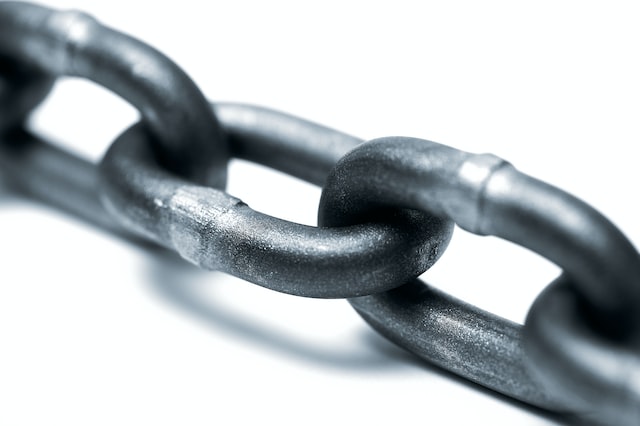What is trauma bonding?
You may have heard the term trauma bonding in relation to abusive relationships. However, trauma bonding is not a clearly defined concept. This article will look at some of the ideas around trauma bonding, and what you can do if you have had a traumatic experience.
In Casassa Knight and colleagues’ (2022) review of the trauma bonding literature. They reported that trauma bonding was often described as an emotional attachment between abuser and victim. They proposed that the term “trauma coercive attachment” may be a better fit. Stating it captures the trauma bond in the context of “a traumatic response to a terrifying chronic stressor”. This was rather than a dysfunctional attachment as noted in other research (Raghavan & Doychak, 2015; Sanchez et al., 2019).
The ‘bond’ in trauma bonding
Attachment and bonding in human relationships are complex phenomena. Harry Harlow’s famous experiment that compared the attachment of a baby monkey with two types of surrogate mothers highlights this. One surrogate ‘mother was made of hard wire and provided milk. The other was made of soft cloth only. When faced with danger the baby monkey attached more frequently to the surrogate made of soft cloth. This was, despite the fact that the surrogate made of hard wire provided food. It would be easy to assume that the baby monkey would have chosen to stay with the surrogate that provided food. However, this experiment demonstrates that the reasons behind the formation of attachment with others is not that simple.
How does trauma bonding happen?
One of the ways to look at trauma bonding is through the behavioural and learning components of the experience. This is also called conditioning. There are several parts to conditioning.
Positive reinforcement
Positive reinforcement is the addition of a positive outcome to strengthen behaviour. In the trauma bonding context, we also have another natural process that may be part of this, attachment.
When faced with danger, people tend to seek attachment and bond with others. In this process we often receive comfort.
In the trauma bonding context this natural and complex attachment behaviour (as described above) may be associated with positive reinforcement. In the experience of being abused, the abuser may provide comfort to their victim, despite also being the source of pain. This comfort can be in many different forms, it may be reassurance, it may be physical care, it may be gifts, it may be praise.
Negative reinforcement
Another learning response that can happen is negative reinforcement. This type of reinforcement works to strengthen certain behaviours by removing some type of aversive outcome. In the trauma and abuse context a response such as avoiding eye contact, being submissive or freezing may be reinforced if it reduces the assailant’s violence, threats, or verbal abuse.
A number of researchers have highlighted negative reinforcement as key in trauma bonding as it can help remove or take away a negative outcome in the moment, such as the fear of imminent danger or further harm from the abuser (Walker, 1979; van der Kolk, 1989).
Punishment
Punishment involves either presenting or taking away something to weaken a behaviour. In the trauma bonding example above, we can see that an assailant’s violence or threat of violence may act as a punishment to weaken, or reduce behaviours that might threaten the dynamic of power. For example, hitting the victim if they look them in the eye, or are not submissive.
Another factor associated with conditioning is when the reinforcement is intermittent it is most powerful. The unpredictable nature of an assailant means that these reinforcement processes are very powerful. i.e they can create enduring and strong bonds
Other factors that may be at play
Empathy
Empathy is an essential part of emotional functioning and interpersonal life. However, in the abusive relationship context some researchers (Effiong 2022) have suggested that empathy; Being thoughtful and understanding of the mental state of the perpetrator may be maladaptive as it may lead victims to accept and rationalise violent acts by abusive partners. This can lead to victims engaging in self-blame
Cognitive processes
Researchers Dutton and Painter (1981) described that cognitive processes can play a part in the development of traumatic bonding. They reported that repeated incidence of violence causes a shift in thinking, from a belief that the violence will never happen again to the victim believing they may control it or did something to deserve it. This is also associated with thoughts of self-blame and low self-esteem.
Conclusions
Trauma bonding is a complex phenomenon some of the conceptualisations may be blaming and unhelpful. Although difficult to define conceptually, this article highlights the conditioning response that may be behind trauma bonding. It is also important to know that conditioned responses and cognitive responses can be changed through psychological intervention.
It could also be helpful to consider seeking psychological support, if you feel stuck in the trauma bond or continue to experience negative impacts as a result of the abusive relationship. Psychologists at the centre for clinical psychology are experienced at understanding and changing the effects of trauma.
References
Casassa, K., Knight, L., & Mengo, C. (2022). Trauma bonding perspectives from service providers and survivors of sex trafficking: A scoping review. Trauma, Violence, & Abuse, 23(3), 969–984. https://doi.org/10.1177/1524838020985542
Dutton, Donald G., and Susan L. Painter. 1981. Traumatic Bonding: The Development of Emotional Attachments in Battered Women and Other Relationships of Intermittent Abuse. Victimology: An International Journal 6 (1–4): 139–155.
Effiong, J. E., Ibeagha, P. N., & Iorfa, S. K. (2022). Traumatic bonding in victims of intimate partner violence is intensified via empathy. Journal of Social and Personal Relationships, 39(12), 3619–3637. https://doi.org/10.1177/02654075221106237
Harlow, H. https://www.youtube.com/watch?v=OrNBEhzjg8I
Walker, L.E. (1979). The Battered Woman. New York: Harper and Row.
van der Kolk, B.A. (1989). The compulsion to repeat the trauma: re-enactment, revictimization, and mashochism. Psychiatr Clin N Am 12, 389-411






